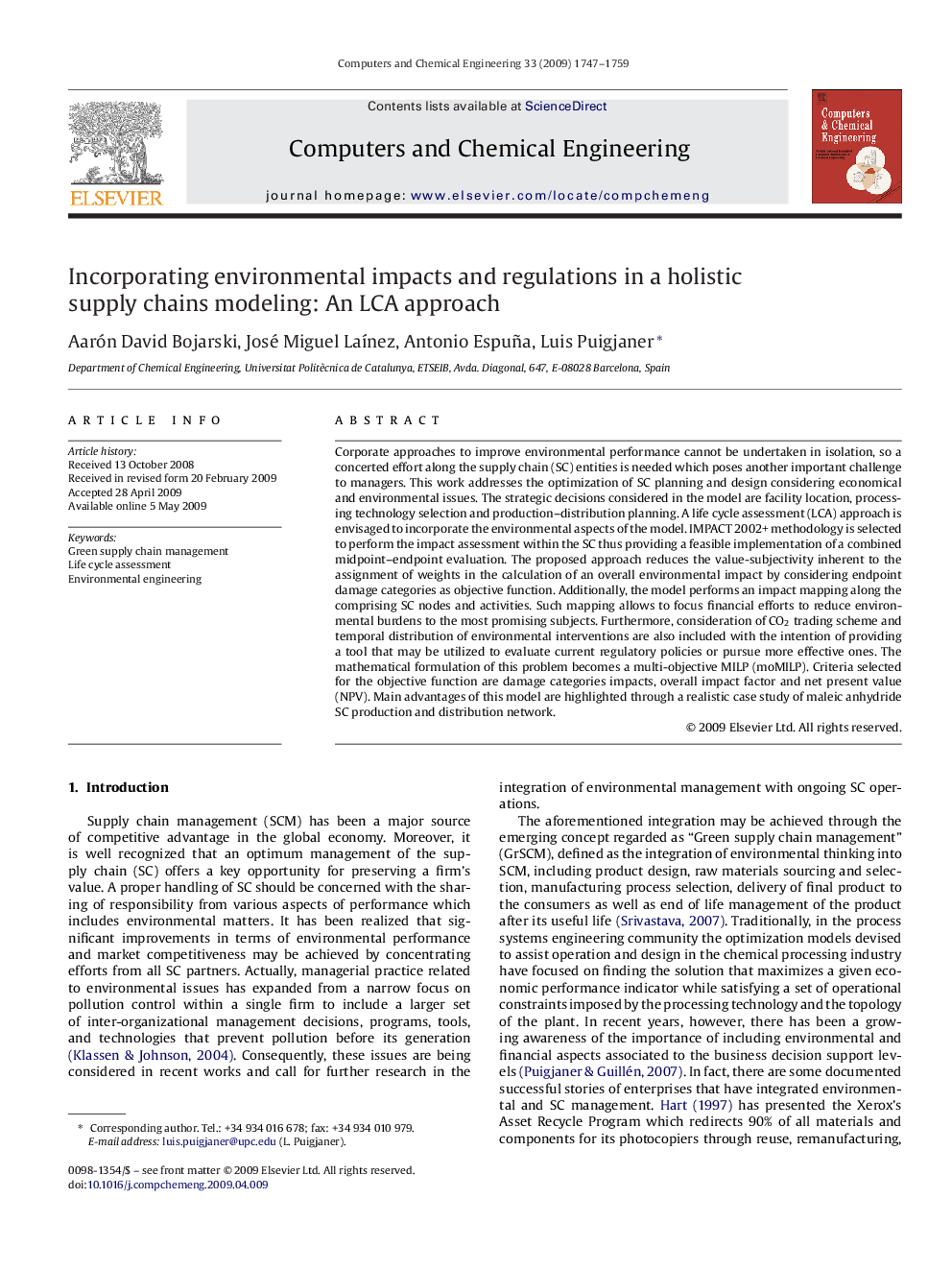| Article ID | Journal | Published Year | Pages | File Type |
|---|---|---|---|---|
| 173580 | Computers & Chemical Engineering | 2009 | 13 Pages |
Corporate approaches to improve environmental performance cannot be undertaken in isolation, so a concerted effort along the supply chain (SC) entities is needed which poses another important challenge to managers. This work addresses the optimization of SC planning and design considering economical and environmental issues. The strategic decisions considered in the model are facility location, processing technology selection and production–distribution planning. A life cycle assessment (LCA) approach is envisaged to incorporate the environmental aspects of the model. IMPACT 2002+ methodology is selected to perform the impact assessment within the SC thus providing a feasible implementation of a combined midpoint–endpoint evaluation. The proposed approach reduces the value-subjectivity inherent to the assignment of weights in the calculation of an overall environmental impact by considering endpoint damage categories as objective function. Additionally, the model performs an impact mapping along the comprising SC nodes and activities. Such mapping allows to focus financial efforts to reduce environmental burdens to the most promising subjects. Furthermore, consideration of CO2 trading scheme and temporal distribution of environmental interventions are also included with the intention of providing a tool that may be utilized to evaluate current regulatory policies or pursue more effective ones. The mathematical formulation of this problem becomes a multi-objective MILP (moMILP). Criteria selected for the objective function are damage categories impacts, overall impact factor and net present value (NPV). Main advantages of this model are highlighted through a realistic case study of maleic anhydride SC production and distribution network.
